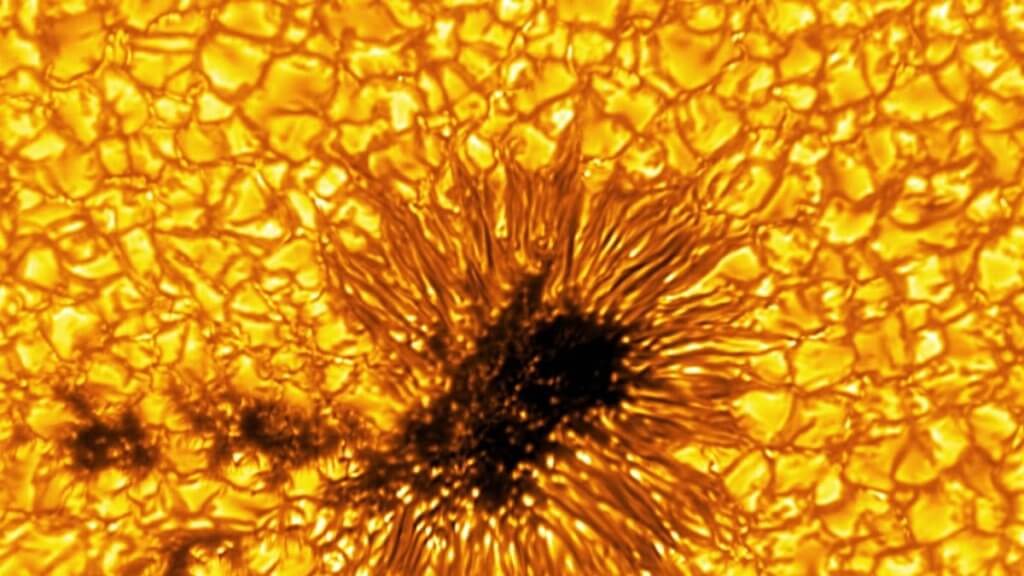A new solar telescope in Hawaii has released a series of images of the sun that peer inside the depths of its sunspots and so-called “quiet regions.”
The sun may be close to 94 million miles away in space. But with the Daniel K. Inouye Solar Telescope, funded by the National Science Foundation, it seems as if astronomers are able to gaze at the life-giving star under a microscope.
The Hawaiian observatory was built to capture super sharp pictures of the sun and measure the magnetic fields of solar features that affect “space weather,” including sunspots, flares, and coronal mass ejections — the plasma spewed from the sun’s atmosphere. These phenomena can have catastrophic consequences, disrupting power grids and telecommunications systems on Earth.
Right now, scientists don’t know how to forecast solar storms well, and though the strongest type of these natural events don’t happen often, they can be quite damaging. A solar flare in March 1989 caused all of Quebec, Canada, to experience a 12-hour power outage. It also jammed radio signals for Radio Free Europe.

Credit: NSF / AURA / NSO
Construction of the $300 million observatory(opens in a new tab) was tumultuous, a collision of development against indigenous culture. The solar observatory sits atop the dormant volcano Haleakalā(opens in a new tab), towering over Maui at 10,000 feet above sea level. In Hawaiian, the name Haleakalā means “house of the sun.”
Foundation leaders say the summit has special environmental conditions that allow astronomers to better study the solar corona. But it’s a sacred land for many Hawaiians who regard the high mountain peak as a spiritual place to honor ancestors and pray. Over the years of the observatory’s construction, protestors(opens in a new tab) attempted to stop it. Despite litigation and a global pandemic, the telescope project was eventually completed.
Credit: NSF / AURA / NSO
Want more science and tech news delivered straight to your inbox? Sign up for Mashable’s Light Speed newsletter today.
Many of the sunspots pictured are as vast in size as Earth, if not larger, according to the observatory(opens in a new tab). These pockmarks look dark because they are cooler than other parts(opens in a new tab) of the sun’s surface. The spots can also be the cause of solar flares — sudden explosions of energy caused by nearby tangling magnetic field lines.
Some of the images showcase “light bridges,” which appear to cross the gaping sunspots. These features are thought to be the beginning of a sunspot breaking apart. Scientists don’t know how deep these structures form.
Credit: NSF / AURA / NSO
The telescope also captured “quiet regions” of the sun where there is low solar activity. The images show a bright pattern of hot plasma surrounded by darker lanes of cooler plasma. In the atmospheric layer around the sun, there are long, dark fibers emerging from small magnetic field clumps. Up close, the telescope images reveal them like a shag carpet or a mop head.
The new telescope, which is just ramping up its operations, will work in conjunction with the telescopes capturing data in space: the Solar Orbiter, a collaborative mission of the European Space Agency and NASA launched in February 2020, and the Parker Solar Probe, a NASA spacecraft sent up two years earlier.

